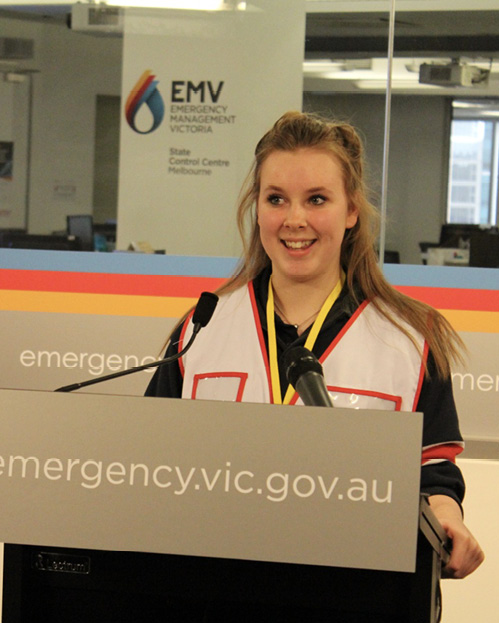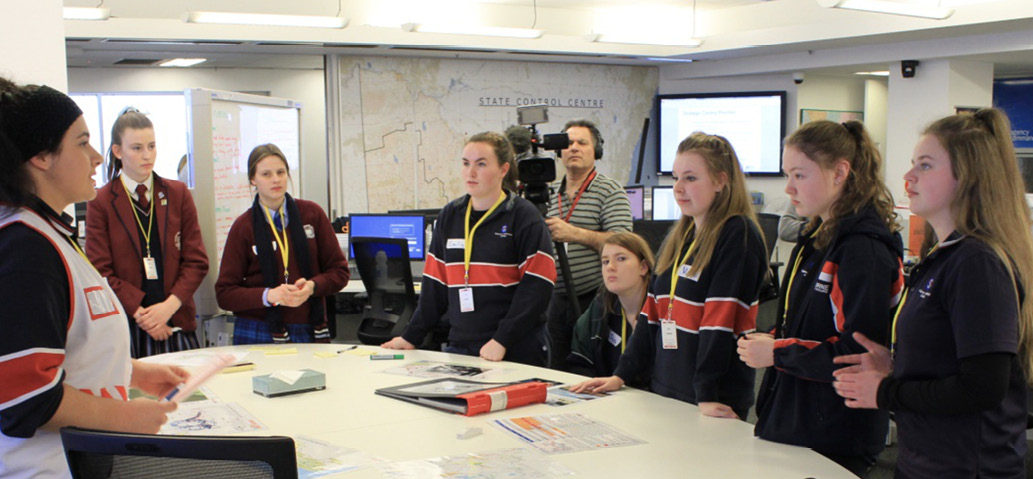
By Susan Davie, Victoria State Emergency Service, and Ian Morrison, Thinkspace Emergency Management
In July 2017, 25 Year 10 students from the Macedon Ranges in Victoria traded their school uniforms for State Control Centre tabards to put their emergency skills to the test.
Students from Braemar College, Kyneton Secondary College, Gisborne Secondary College and Sacred Heart College took part in the exercise. They worked on a fire scenario loosely based on the Ash Wednesday bushfires of 1983, which would affect them all if it occurred today.
Exercise Student Exchange was developed in a partnership between the Victoria SES, Macedon Ranges Shire Council and Emergency Management Victoria with Thinkspace Emergency Management. The exercise explored and validated existing emergency management plans in relation to the needs of children and young people in emergency settings.

This builds on work undertaken in 2012 when the Macedon Ranges Shire Council Youth Development Unit and Emergency Management Unit hosted a Youth Emergency Management Workshop.1 Young people from across the municipality came together to identify and discuss emergency management issues in areas that concern young people.
The purpose of the 2012 workshop was to establish a link between young people living in the shire and the emergency management planning process. The Municipal Emergency Management Planning Committee (MEMPC) endorsed the workshop as a way to consult with young people regarding the local emergency management plan.
Following this workshop, the MEMPC created the Children and Young People Emergency Sub-Committee. The sub-committee developed the Children and Young People Emergency Sub-plan, as part of the Municipal Emergency Management Plan. The Emergency Management Manual of Victoria recognises children as being uniquely vulnerable during emergencies. Similarly, the Victorian Government Emergency Management Planning Guide for Children and Young People 2012 advises best practice must:
The goals of the exercise were to:
Participants were divided into two teams and mentored by emergency management professionals from a variety of Victorian Government departments and emergency management agencies.

During the exercise, participants focused on the situation, mission and execution of delivering community information. Both teams successfully completed a filmed piece to camera encouraging community members to:
The exercise concluded with participants briefing the Emergency Management Commissioner, Craig Lapsley and Mary-Anne Thomas MP, Member for Macedon regarding recommended state-wide priorities for responding to a major fire scenario with Code Red Fire Danger.
Participant feedback showed there was significant value from learning how emergency services deal with situations and work together. Participants had the opportunity to:
Craig Lapsley said students demonstrated an excellent understanding and awareness of bushfire.
‘Living in the Macedon Ranges, these students have a great understanding of fire and how fire can affect people and communities. Young people have a lot to contribute in their community and in emergency management. It’s important their voices are heard,’ he said.

1 Hocking A, Taylor B & Tupek K 2012, Macedon Ranges youth experiences in emergency management planning, Australian Journal of Emergency Management, vol. 29 no. 1, pp 56-58.